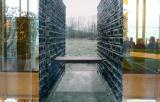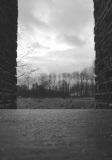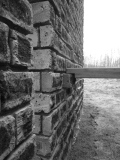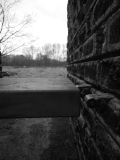What is an altar?
An inquiry-by-making, into use, perfection and the divine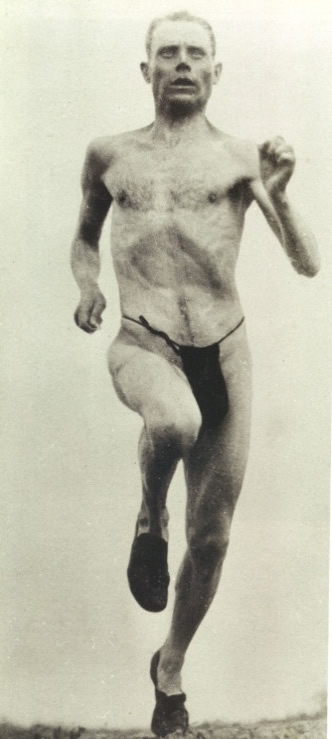

The objective of this preliminary assignment was to explore the idea of an altar spatially and conceptually. One of the students wanted at first to make an altar in the ground so as to force people onto their knees in order to see it. He changed his mind. Another felt somehow offended at the idea of having to build an altar at all as he was trying hard to be non-religious. But soon he realised that atheists are just as religious as everyone else. He ended up making something extraordinarily special that draws in all our loving attention. How should I present the results? I think I shall go from small to large.

a [PERFECT] handshake
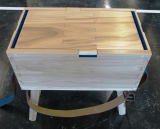
What is an altar? How does it work? I ask the question because of an exhibition set up by students of Jan Schevers and myself from the Naked Architect Studio at the TU Eindhoven. It is their final studio project, takes a full year to complete and will end in their receiving a Master of Science in architecture. The Naked Architect takes its name from the Naked Chef of course: it is about ‘the bare essence of beauty’, the beauty of simple ingredients put together well to make something special. We used the picture of the athlete Paavo Nurmi running in just a loincloth as our mascot. The objective is to think about making, the problem to grapple with is the concept of perfection. Japanese vases manifest perfection in their imperfection. At the same time Japanese joinery is unsurpassed in its careful and loving attention to the smallest detail. Perfection is one of the great concepts in our landscape of thought; it has got us into- and out of a lot of trouble. Especially with reference to making things like buildings, the idea of the perfect and perfectibility is intimately linked with our conceptions of the good, the divine, progress, design, evolution, truth an beauty. I think Spinoza had the right attitude; he told us to try and love the world in its perfection. That seems like a good idea. But how do you go about doing that?
The Naked Architect Studio project is about exploring the “thinking about the making”, as the Smithson’s called it. With regard to perfection we try to avoid a relativist stand in which the difficulty of defining perfection objectively leads to the alternative, the idea that anything goes and that everything is relative. That will not do, not because relativism is not true, because it is in a very interesting way, but because its faulty derivative, the belief that anything goes, does not generally produce particularly interesting architecture. Instead this studio challenges the student to be careful in formulating his or her point of view from which perfection can be properly described and effectively pursued. We couldn’t practically set them a building to complete, so Jan came up with the idea of something that is certainly architectural, but which is also more easy to handle: an altar. Altars have unfinished business with the problem of perfection…
What is perfection? This is not an easy question to answer and the attempt often ties our thoughts into worryingly complex knots. It very much depends you see, in quite a literal way, on one’s view. A broken toaster can be a perfect broken toaster, at the same time it is undoubtedly an imperfect toaster: it will not do what we feel it is supposed to. And thus we happily impose laws upon things and when the subject of that law refuses to obey its spirit or letter we have our judgment ready. Mind you, a broken toaster might have its uses. We might substitute our mild satisfaction or neutral expectation at the toaster working well (OH that precious neutrality that one achieves when the world around you just simply gets on with things and leaves you in peace!) for a loving or anxious attention that is geared to dealing with a problem. It is good fun to fix a toaster occasionally. A broken toaster can be the perfect focus for our delight in fixing things. It can, alternatively, be a perfect focus for our frustration when our ability at fixing things is less than adequate, in which case the broken toaster becomes a perfect scapegoat. Perfection is liquid, it is the extension of what we see all the way into an unknowable ideal and probably naïve ideal and can apply mundanely to any function the object under view is performing well.
One thing needs emphasis, perfection only ever pertains to the useful, to things brought into relation with us and which are asked to perform and do so well in some way. And if you then come back at me aggressively or triumphantly with the word God, I shall merely say: I rest my case. What is more perfectly useful than a perfect God? That is a radical statement, and I will not let it go too easily. To call a broken toaster perfect from a particular point of view is not to invite the absurd, as to invite perfection to confess its true nature as an aesthetic criterion of judgement concerned with use.
The problems arise when the less-than-perfect begins to lose rights because it fails to come up to some naïve conception of perfection. Why should a broken toaster that is beyond fixing, have less of a right to exist than one that is immediately useful to us for making toast? I can see a sigh swelling up in your tested patience, dear reader, but bear with me. Whatever your answer to this riddle you see, and I should hope you answer it sensibly, avoiding all bogus nonsense of airy fairy crap, we nevertheless have to ask ourselves whether the argument we come up with relative to a toaster would also apply to human beings who deviate radically from the idea of what a perfect human being should look like and how it should work? And we should worry at our delight in the prospect at fixing a human being that is broken or making another human being the focus of our frustrations when it does not perform as our law demands.
What is a perfect human being? Surely one that is perfect at being human. And as being human involves a lot more than we can ever be aware of, we have perhaps to be generous and allow all manifestations of humanity their perfection. If we only allow a perfection relative to our personal point of view, we could get ourselves into trouble. It is the point of our view that is at issue here. Other points are legitimate, a point of view is only one coordinate in a huge complex graph in which an infinity of other points of view are possible. To arrogate a particular point of view and give it a primacy is an existential deed. At the same time it is perfectly reasonable for us to lose interest in things that are not useful to us, isn’t it? That is precisely the point of a view, so that one can select among the myriad things that present themselves during a day. If someone else has a great need of broken toasters, who are we to object, but we are perfectly within our right to throw the damn thing out! We need not be silly about toasters, but to what extent do we have to be more careful about human beings and other animals? Perhaps the question to ask in relation to all this is the following: what is the purpose of, say, a company making toasters, A Toaster Making Company or ATMC? Is it to make good toasters? Is it to make the owner wealthy? Is the purpose of the ATMC to give its workers a proper job so that they too can buy toasters? Is it to give its workers a job so that they can acquire a dignified place in society? Is it to make society possible, just as a toaster’s purpose is to help make breakfast a pleasant event? The fact is that the purpose of the ATMC can never be any one of these in isolation. It needs to be all of them in concert, working like a network of compensatory and reactive impulses instituting constant adjustment and occasional reform. If any one of these purposes were given primacy over the others the company would destroy itself eventually. If each were given the purpose of being a check against any of the other criteria, the company would make constant adjustments and reforms to keep its place in society stable.
Perfectionism is a neurosis that imposes one’s own laws of perfection upon everything without discrimination. But there are other sorts of perfectionism. It also manifests itself as an anxiety at not being completely sure which laws to impose, or indeed how to impose them. Perfectionists are lawgivers that are anxious. They have found a law and they are anxious to impose it everywhere, or they look for laws but cannot find ones that are thought good enough, or they are unsure of how well they can apply the laws they have. Perfectionists destroy themselves and the object of their perfect love in their anxiety. What should we call the ability to find perfection in everything, psychotic perfectionism perhaps? The finding of perfection is an athletic ability; it needs learning, training and regular exercise and rigorous honesty. It does not impose its own laws of perfection upon the world, instead it seeks out the qualities in things, it seeks out understanding and learns to enjoy it. To understand is to find perfection. As such it cannot be a disease or a vice; it must be an excellence, a virtue. It is a great task to find the world perfect, and enjoy its perfection. There is a possible paradox here: when you strive after perfection, whatever becomes the focus of your quest is already perfect, its perfection is the reward of your attempt to understand it. It wants for nothing and it gives you joy. To perfect it according to your own narrow laws is a risky business, full of the danger of platitude, bad faith and bad taste. But do not let that stop you. Don’t be afraid of getting things wrong! Should you want to make something useful, like a thing of beauty, or a machine to make toast so as to make breakfast a delight, then make its use a joy. With inanimate objects, like stones, use as enjoyment or the enjoyment of use is easy, you cannot hurt them: inanimate objects are inanimate, they do not care about what happens to them. People who consider inanimate objects to be their property might care, but then we have to treat the objects as living by proxy, as humans by extension, which we will come to in a second. The persistence of a thing as a thing, as matter derives from the laws of a simpler physics that leaves out the physics of emotion and feeling. With machines things become a little more complicated, good use becomes conditional: machines stop working when you treat them badly. Machines like gentleness and understanding. With humans and other animals, defining good use is what society is all about. To see how difficult it is, one only has to describe society and the way it works. This is where buildings become alive, paintings become precious, gold gets its value, a good car can move someone to tears.
Perfection has a lot to do with gods. They form two sides of the same coin. You cannot study perfection without studying the nature of the divine. Perfection is the infinite extension of what we see around us into an unknowable ideal, the divine. This kind of perfection is what drives all utopian thinkers, but also all great craftsmen and artists. They follow their idea, as if it were the holy grail. This kind of perfection has stranger powers, it is capable of creation. God’s perfection, says Anselm of Canterbury, requires his existence. How does that work? Well, ask yourself this question: How could an imperfect God necessitate existence? He might want to, but he couldn’t. An imperfect god need not exist; that non-existence would be at least one aspect of the nature of the god’s imperfection. A perfect god on the other hand could not possibly be perfect in every way if He did not also perfectly exist. His lack of existence would constitute an obvious imperfection, surely? Existence then is an attribute of perfection. Which brings us full circle. IN order to find perfection we need to understand the mode of existence of a thing. You and I exist, are we then perfect? Spinoza would say we are, in a special kind of way. Mind you we are also pretty dumb, and have a lot to learn, so let’s not get carried away…
Perfection in being human is often seen as hubris, as downright arrogant. By attempting to be too much like a god you risk offending the very being you are trying to imitate! Gods are jealous beings. In order to avoid any complications with their God, Persian Carpet-knotters famously made deliberate mistakes in their extraordinarily beautiful works of art in order to avoid hubris and the concomitant wrath of God. As a result they made the strangest of things: perfectly-imperfect carpets. This sounds like a contradiction in terms but isn’t. The imperfection made it more perfectly fit a larger conception of our place in the universe, a conception that demands a fitting humility. Human perfectibility is a worrying concept, as a perfect human being, or at least one who sets himself up as such against others whom he considers less than perfect, ends up being anything but perfect. He ends up being a monster because he privileges one aspect over and above the others that make up humanity and so destroys the lot. This might well hold the secret: the perfection of human being could consist in dealing generously, gently and kindly with those of our imperfections that appear when we are asked to do something anxious making like mend toasters, which I for one, find hard.
So what is an altar? Well when Wittgenstein tried to define the word game, he quickly got himself into trouble. If he chose to define a game this way he would have excluded certain activities which could legitimately have been called games and yet failed to participate in that particular set of attributes. If he were to define a game that way, then the same would have happened to other games. The solution was the family. Activities, he concluded, could be included in a set called games, if we allow the set to be defined by a family of attributes. Any one member of that set can belong to it simply on the basis of participating in at least one of its attributes. So that it would be possible to include games in the set of games which do not share a single attribute. Well this is a useful point of departure for the altar. Almost anything can function as an altar. Altars can be spaces, or things in space, in real space or in virtual space. Most of them share a certain quality with other altars but there can be two altars that themselves share not a single attribute while still belonging to the same set. Most altars share the attribute that one is able to stand in front of them. When standing in front of them there is an intimacy between it and you: a charged space. Something that binds all altars surely is that they confront humanity with the divine and thereby help to confront humanity with the intensely human. They implant ideas in us, they help send messages to the Gods about the nature of our humanity, which help us to see ourselves. Altars are the perfect heterotopes. More than just framing the special or giving the special a place, they are themselves special, or at least they furnish a place for the special to show itself in a special way, like the frame of a painting. My house is full of little altars, some devoted to a special book of object, others to a friend or one of my children, a simple memory of an event. Some will be altar-like one moment and completely free of specialness another.
Jacob Voorthuis




another step closer to [PERFECT]ion
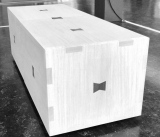


is it [PERFECT]? tell me your [LAW]!


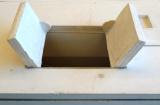


The world is a [PERFECT] playground


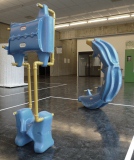
[PERFECT] commemoration



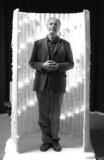
[PERFECT] freedom

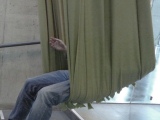
a [PERFECT] moment

[PERFECT] hesitation

Outside stand two altars, one is Edwin’s “unfinished table” a structure weighing 800 kilo’s kept straight by two spindly joists. An exercise in doubt and doubtfulness.
[PERFECT] proportion



a [PERFECT] depiction of nature
